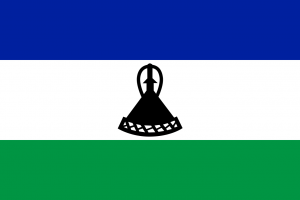Language/Southern-sotho/Culture/Marriage-and-Ceremonies
Introduction
Southern Sotho culture is rich in tradition and custom, and marriage is one of the most significant societal events. Marriage customs and ceremonies are steeped in symbolism, and often involve lengthy rituals that are centuries old. In this lesson, students will learn about Southern Sotho marriage customs and ceremonies, traditional rituals, wedding celebrations, and the cultural significance that underpins them.
Marriage Customs and Traditions
Marriage customs and traditions in Southern Sotho society have remained an enduring element of the community's heritage. Many of these practices are observed to this day. Southern Sotho families preserve and pass on their customs from generation to generation, and marriage rituals are an essential part of these customs.
Arrangement of Marriage
In Southern Sotho tradition, marriages are not only between two individuals but are also relationships that bind two families. Therefore, the process of finding the right partner is a crucial aspect of marriage. Almost always, parents or elders handle the arrangements for the marriage since they have the necessary experience and knowledge to determine the appropriate partner for their children.
Once an eligible partner has been identified, the parents will approach their counterparts in the potential partner's family to initiate the conversation. Once both families have agreed to the arrangement, the process of introducing the couple begins.
Lobola
A central aspect of the Southern Sotho marriage customs is the payment of lobola. Lobola, also known as bride's price, is a specified sum of money or livestock that the groom pays to the bride's family as a compensation of sorts, akin to a bride price. The bride's family uses the lobola, usually in the form of cattle, to compensate for the loss of their daughter's labour and her childbearing capacity, which ultimately leads to the strengthening of the relationships between the extended families.
Lobola is a prevalent custom in Southern Africa, but its practice varies between communities. In Southern Sotho, lobola is usually paid in cattle or its monetary equivalent, which can sometimes exceed a hundred beasts. Rituals accompany the process of lobola payment, such as the slaughtering of one of the cows on the bride's family homestead to initiate the process.
Umemulo
Umemulo is the coming of age ceremony for females in Southern Sotho culture. Once a girl reaches the age of eligibility, the family organizes a umemulo ceremony to introduce her to the community as a young woman. The practice of umemulo aligns with the idea of preparing young women for marriage, as it is a rite of passage from girlhood to womanhood.
During the umemulo ceremony, a young girl is adorned with beaded jewelry, symbolic of her readiness for marriage, and her beauty is celebrated. Family members and other guests shower the young woman with gifts, usually household items, in preparation for her marriage.
Wedding Ceremony
The Southern Sotho wedding celebrates the union between the bride and groom, as well as the bringing together of two families. The wedding ceremony typically involves traditional rituals, such as the exchange of vows, traditional attire, and the symbolic reference to cattle.
The wedding ceremony usually starts with the couple getting dressed in traditional attire. The bride puts on a colorful blanket, and the groom wears a straw hat and a cloaked blanket called a mokorotlo. The exchange of vows follows, during which the couple exchange symbolic gifts, such as cowries, to represent their commitment to each other.
The most significant aspect of the wedding ceremony is the reference to cattle. Cattle are symbolic of wealth and are used throughout the ceremonies referenced in this lesson. During the wedding, the couple often receives cattle from the groom's family as a sign of their appreciation for the bride's arrival in their family.
Conclusion
Marriage customs and ceremonies are the pinnacle of Southern Sotho tradition and culture. They represent a culmination of long-held customs and actions by families to ensure the continuation of their legacy. The marriage ceremony represents the coming together of two families, and the exchange of goods and services symbolizes a lifelong bond between them. This lesson allows the learner to appreciate the values, beliefs, and customs of Southern Sotho culture, which are intertwined throughout the significant moments of their lives.
Other Lessons

